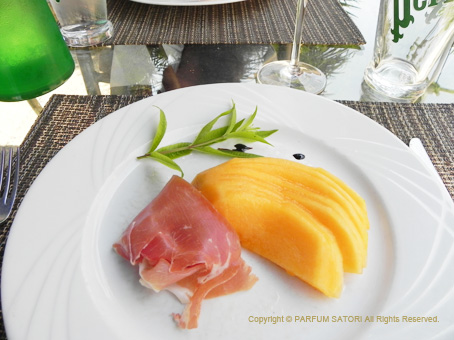
Tuberose has an animalic note. The word 'Tuberose' sounds cute and you might imagine an innocent girl from its pretty white appearance.
However, once you get closer and smell the flower, it releases a strong, intruding scent with a rich milky-creamy touch and it also has an animalic note. Tuberose Abs Oil has an appetizing salty scent reminiscent of ham or consommé behind a strong green note.
There is a food factory next to the laboratory of perfumery in Grasse, in the South of France.
In the evening when I stepped out of the laboratory, a smell of consommé coming from the factory would make me so hungry. Tuberose scent brings back memories.

To add depth to a voluminous white floral note of HANAHIRAKU, I used Tuberose, which has a salty and creamy aspect. And it leads to a dry miso, soy sauce and amber base notes.
Generally, the scent of tuberose is described as sweet, rich, heavy and sensual ,but I found it 'foody' and it became an important keyword.
Tuberose is white floral and smells like consommé jellied ham.
Magnolia tree has a melony top note and is white floral in the middle.
Ham and Melon is a delicious combination.
There is a Japanese traditional dish called Hoba-miso, which is a grilled miso on magnolia leaves. Fermented foods like miso and soy sauce have aninmalic characters.

So it is in the course of nature that animalic notes, sweet fruits and other food ingredients other than sweets are used to create flower scents.
It's not an idea just popped into my head.
The idea is based on experience and memories and perfume keywords acquired as I grow older.
It was created by making an instant connection between ideas and knowledge of different genres.
I think creating scent is like music composition, pottery making or cooking.
Looking back on the process of making HANAHIRAKU, I'm writing this.